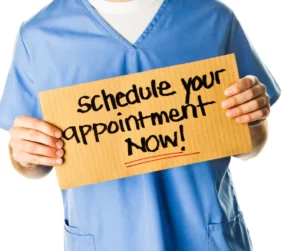The Link Between Exercise and Hearing Health

This exploration investigates the complex relationship between hearing loss and exercise. It’s a journey that reveals how being physically active boosts overall health and plays a significant role in preserving and enhancing auditory health.
Physical Fitness: A Key to Hearing Health
There’s a noteworthy correlation between hearing loss and exercise. Regular exercise helps maintain overall body health, supporting auditory functions. Activities like cardiovascular exercises can increase blood flow, including to the inner ear, potentially offsetting some impacts of hearing loss.
The Critical Role of Inner Ear Blood Flow
Active lifestyles contribute significantly to the blood circulation in the inner ear, an area crucial for processing sound. Improved blood flow ensures the delicate structures within the ear receive the oxygen and nutrients they need to function optimally, underlining the importance of regular physical activity for hearing health.
Deep Dive into Research: Exercise’s Role in Auditory Health
Recent studies shed light on the significant connection between hearing loss and exercise:
- A 2021 study demonstrated that individuals with hearing loss were notably less active than those with normal hearing.
- A 2020 research highlighted a clear association between reduced physical activity and increased hearing loss.
- In 2023, further studies indicated an elevated risk of hearing loss in people with diabetes, stressing the importance of regular exercise and health management in hearing preservation.
Learn more about diabetes and hearing loss.
Cardiovascular Fitness and Its Influence on Ear Health
Understanding the intricate link between cardiovascular health and hearing is critical, especially for those balancing hearing loss and exercise.
The role of the heart in pumping blood to various body parts, including the inner ear, is fundamental. A healthy heart ensures that the inner ear’s complex system of cells and nerve fibers receives sufficient blood, vital for hearing functionality. Declines in cardiovascular health can reduce blood flow to the inner ear, potentially causing hearing loss.
Maintaining cardiovascular health is crucial for auditory wellness. A holistic approach involving a healthy diet, regular exercise, and effective management of conditions like high blood pressure and diabetes can significantly benefit both heart and ear health. Additionally, quitting smoking can lead to vast improvements in cardiovascular and auditory wellness.
Discover more about foods for hearing health.
Understanding Exercise-Induced Hearing Loss (EILD)
EILD is an intriguing phenomenon where individuals experience a temporary decrease in hearing sensitivity after intense physical activity, often accompanied by tinnitus.
Unpacking the Causes of EILD
- Increased Blood Flow: Intense exercises lead to a surge in blood flow, including to the inner ear, potentially straining its delicate structures.
- Muscle Contractions: Exercises involving the neck and head can transmit vibrations to the inner ear, impacting hearing temporarily.
- Dehydration and Auditory Health: Dehydration during workouts can affect the fluid dynamics in the inner ear, impacting its function.
- The Impact of Loud Noise: Exposure to high noise levels during activities like running or gym workouts can exacerbate hearing loss.
While EILD is usually temporary, it’s essential to recognize when these changes might indicate a more permanent shift. Prolonged exposure to loud noises or frequent episodes of EILD could lead to more lasting auditory issues.
Comprehensive Strategies for Managing EILD
- Hydration: Staying well-hydrated is crucial for maintaining inner ear health during exercise.
- Noise Management: Using earplugs or noise-canceling headphones can help mitigate the impact of loud environments.
- Exercise Selection: Choosing less strenuous activities can help prevent EILD, with options like swimming and cycling being ideal.
- Exercise Intensity Monitoring: Gradually increasing workout intensity allows the body, including the auditory system, to adapt without strain.
- Professional Consultation: You should get persistent or worsening EILD symptoms evaluated by healthcare professionals for appropriate management and advice

Safeguarding Hearing Health During Physical Activities
When exercising, it’s vital to balance the benefits of staying active with the need to protect hearing.
Loud music in exercise classes can pose a significant risk to hearing health. Monitoring and discussing sound levels with trainers or using protective ear gear can help prevent damage from excessive noise. Choosing gentle exercises on the ears, like yoga or pilates, can offer significant health benefits without the risk of auditory strain. These activities ensure fitness gains while maintaining hearing health.
Explore more about hearing safety.
Comprehensive Approach to Exercise and Hearing Health
- Monitoring Exercise Intensity: Keeping workouts at a moderate level can prevent undue strain on the ears.
- Equipment Use and Noise Management: Being cautious with noisy gym equipment and using sound-dampening methods can reduce auditory risks.
- Regular Auditory Health Checks: Staying vigilant to changes in hearing and consulting audiologists for any concerns is crucial for early detection and management of potential issues.
Addressing Dizziness and Hearing Loss During Exercise Routines
Managing dizziness and hearing loss during exercise is crucial for a safe and effective workout experience. Factors like dehydration, rapid blood flow changes, and inner ear problems can lead to dizziness and hearing loss during exercise. Understanding these causes is essential for effective management.
Maintaining hydration, gradual workout intensification, and proper warm-up and cool-down routines can significantly reduce these issues. Avoiding rapid positional changes and engaging in deep breathing exercises during workouts can also be beneficial.
Importance of Medical Consultation
Persistent or severe symptoms should prompt a consultation with healthcare professionals. Conditions like fluid buildup in the inner ear, vertigo, or neurological issues like a stroke might be underlying causes that require professional intervention.

Emphasizing Hearing Health in Your Active Lifestyle
Our exploration into the complex relationship between hearing loss and exercise has highlighted the vital role of physical activity in promoting not only overall health but also auditory wellness. We have gained insights into how cardiovascular health interplays with ear health and the nuances of managing exercise-induced hearing loss. This knowledge is crucial in understanding the influence of exercise on our hearing.
Engaging in regular exercise brings numerous benefits to our auditory health. Yet, it’s essential to be mindful of the potential risks and adopt measures to safeguard our hearing. Opting for low-impact exercises, controlling workout intensity, and using ear protection in loud environments are strategies that contribute to the health of both our body and ears.
Professional guidance is vital for individuals noticing changes in their hearing during or after physical activities or those concerned about their hearing health. Stanford Hearing is here to assist. Please schedule a free hearing evaluation with Stanford Hearing Aids. This step ensures you can continue to reap the benefits of an active lifestyle while enjoying clear and healthy hearing.
Your journey towards fitness and maintaining hearing health are integral to your overall well-being. By attentively managing both, you pave the way for a harmonious and fulfilling life where staying active and hearing clearly go hand in hand.
